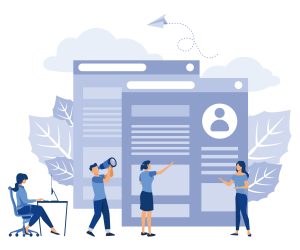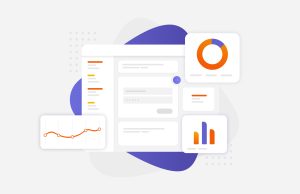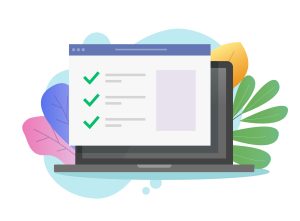Employee onboarding is a crucial part of ensuring that you have a happy and engaged workforce. Whether you’re welcoming new starters in-person, virtually, or a mixture of both – it’s perhaps never been more important to get the onboarding process right.
In this guide, you will find information vital to the success of any employee onboarding process. Be sure to also watch our video detailing the secrets to better onboarding.
This essential guide will explore every aspect of the onboarding process including:
- What is employee onboarding?
- The difference between onboarding and orientation
- Why onboarding new employees is important
- Employee onboarding statistics
- Onboarding roles and responsibilities
- Four phases to onboarding new employees
- Onboarding for remote workers
- A remote-first onboarding model for all employees
- Common onboarding mistakes to avoid
- How onboarding software can help
- Onboarding checklist
By the end of this, you will have all the tools and knowledge to create your own employee onboarding process.
What is employee onboarding?
Employee onboarding is a process that welcomes new employees to their role and familiarises them with your organisation. This crucial process introduces an employee into an organisation and outlines the structure, culture and policies. It is a core component of setting new starters on the right path during those crucial first days and weeks.
Onboarding processes vary from organisation to organisation. However, onboarding is typically split in to four distinct stages:
- Pre-boarding (between offer and first day)
- First day
- First week
- First month
Generally speaking, the onboarding journey is designed and owned by HR teams with line managers of the new employees also playing a role in the onboarding of new employees.
The best onboarding processes equip employees with all the insight and tools they need to settle into their role and become productive team members as quickly as possible.
Employee onboarding is crucial for making sure new staff get up to speed with all the key fundamentals, such as accessing your HR system and other critical software, familiarising them with their new working environment, meeting team members, and getting to grips with your organisation’s culture.
Meanwhile, employee onboarding best practice dictates that new starters shouldn’t be left to fend for themselves. They should be provided with everything they need to carry out their role and feel a part of your organisation – they should be supported to forge relationships with their colleagues, and fellow new starters. This social interaction is central to making people immediately feel welcome and helps to reinforce the sense they’ve made the right decision in joining your organisation.

Onboarding vs orientation
Onboarding consists of a series of interactions and activities that take place over the first week and month of a new starter’s employment, with a focus on job- and department-specific activities.
Orientation is a one-off event aimed at welcoming new starters to an organisation, and usually takes place on their first day. All new starters tend to receive the same information, regardless of what their role is.
Examples of orientation activities include:
- Giving new starters an overview of your organisation’s mission, vision, and values
- Asking them to complete compulsory paperwork
- Discussing benefit packages and sharing enrolment instructions
- Explaining health and safety policies and any other critical policies
- Distributing equipment such as laptops and security or parking passes
- Offering a guided tour of your premises
- Informing them of the main organisational contacts, ie within HR and IT
- For remote employees, orientation activities are typically focused on information security and online safety
Why employee onboarding is important
We’ve already alluded to some of the positives associated with employee onboarding. Here are a dozen of the most significant benefits for new starters, and your organisation, of designing and implementing a comprehensive, relevant onboarding process.
12 benefits of employee onboarding
- Helps new staff feel at ‘home’
- Gets them fully up to speed with processes
- Enables them to get to know their colleagues sooner
- Improves staff retention
- Boosts employee productivity
- Creates happy staff, who go on to become brand advocates
- Contributes to a happy working environment
- Improves company culture
- Clarifies policies and expectations
- Embeds processes and procedures for an efficient organisation operation
- Develops strong and productive connections between staff
- Encourages open communication and fosters trust
By no means is this an exhaustive list, but it does give you a flavour of the positive outcomes that can be achieved simply by embracing employee onboarding.
If you aren’t achieving some of these benefits from your existing onboarding process, gather feedback from recent new starters and their line managers, and devise ways to improve or revitalise your existing process.

Employee onboarding statistics
To reiterate the importance of thorough employee onboarding, let’s take a quick look at some of the data.
It’s clear that onboarding is crucial for long-term staff retention. Nearly 70% of employees are more likely to stay with their company for at least three years if they have a great onboarding experience, while a separate survey found that the vast majority (93%) of employees believe their onboarding experience will determine if they stay within the organisation.
We know that the risk of staff turnover is high during an individual’s first days and weeks: up to 20% of turnover occurs within those first 45 days.
Meanwhile, it appears that the general quality of onboarding programmes is poor. Two-thirds of companies don’t set goals or milestones for new starters, and just 10% of workers say that their onboarding programme is any good.
So, why does it matter? UK job vacancies hit a record high of 1.3 million at the start of 2022, with almost half (45%) of employers reporting that they have vacancies that they are finding hard to fill. These shortages are having a significant negative impact on existing employees, nearly half of whom say that the hiring of extra staff would ease their stress and prevent burnout. We also know that the cost of having to rehire someone leaves is high – up to 20% of a role’s salary.
Onboarding roles and responsibilities
Who is responsible for employee onboarding?
Onboarding new employees is an organisation-wide responsibility that will involve several people and teams. Typical onboarding programmes will involve:
Hiring manager/line manager
This person will have been involved in the recruitment process and played a role in appointing the new employee. From the new starter’s perspective, this is their main, or one of their main, contacts. Supporting line managers and offering the best onboarding journey for their team member is essential.
Here are six ways for HR teams to support line managers with onboarding new starters:
- New starter checklist – it can be as simple or as detailed as you need and is a great tool for easing the stress off the line managers to focus on planning and direction in those pivotal first weeks
- Create an induction plan – HR teams can create templates and guides that can be easily added to by line managers to tailor the induction to their new starter. Encourage new hires to meet as many people from across your organisation as possible
- Provide an easy-to-access space for resources and information – use your HR system to individuals self-service access to vital information (such as policies) and tools (such as booking training courses and leave)
- Introduce and update management training regularly – ensure that your line managers are giving new starters the best experience by providing them with the right tools, such as communication and listening skills. You may have people in your organisation that are new to people management, and it’s important to give them the right support
- Use technology to support the onboarding process – use onboarding software that allows you to effortlessly create a new starter experience and gives managers information at the click of a button. It’s quick, and it’s effective
- Adapt and embrace the hybrid working experience – create an onboarding plan that allows for flexibility for remote joiners, and plan for how you’re going to be engaging and retaining new starters who are joining remotely
HR manager
Is responsible for designing, overseeing, and delivering the onboarding process to the required standard and within the right timeframe. The HR team will often deliver a portion of the onboarding phase – typically, the pre-boarding process and an orientation meeting on the first day – and then hand over the new starter to the care of their line manager. They may also schedule meetings with divisional directors and other important people in the organisation on behalf of the new starter.
Personal buddy or coach
It’s not uncommon for new starters to be paired up with a ‘buddy’ from day one. This is usually a colleague or somebody who does the same or similar role as them. Meanwhile, some organisations have mentoring programmes in place that provide staff with dedicated support that enables them to progress within their job and the company.
The most successful employee onboarding programmes have clearly defined boundaries in relation to existing team members’ responsibilities. For example, the company-wide outlook (eg culture, values and initial administration) is guided by HR. Making sure employees are clear on their daily, weekly, monthly tasks, overall objectives and how the team operates, is the line manager’s responsibility.
Just as each employee onboarding programme is specific to each individual organisation, how the responsibilities are shared among job roles varies from organisation to organisation, too. This is purely an illustration of how things tend to look, but can be adapted as you see fit.
Four phases to onboarding new employees
Employee onboarding is something that should be carefully considered, planned, and consistent for your organisation; it’s not something to make up in a hurry when you’re presented with a new starter waiting in reception on their first day.
Investing time and effort in your employee onboarding process helps to reinforce your position as a responsible, committed employer. In turn, employees feel valued and equipped with everything they need to flourish and succeed and, more importantly, stay with the organisation. This is crucial, especially as research has found that 30% of employees leave their jobs within the first 90 days. Common reasons for leaving include the role not meeting their expectations (43%), something specific driving them away (34%) and company culture (32%).
Most employee onboarding processes comprise four phases:
Phase one: pre-boarding
Pre-boarding begins the moment the new starter is offered the job. With average notice periods on the rise, the gap between people getting that all-important job offer and actually starting a job is growing. For employers, this is a valuable opportunity to start engaging with their new employees, welcoming them to the team and establishing communications with them.
Specialist onboarding software, such as Ciphr onboarding, can be used to share essential information before the first day, and invite new hires to complete tasks.
Pre-boarding activities might include:
- Sharing relevant preparatory information
- Answering questions
- Clarifying first day details (such as what time to start, where to go and who to ask for)
- Scoping the onboarding process
- Establishing a rapport
- Sharing policies
- Collecting personal information, such as bank details
- Inviting new starters to complete training activities
Phase two: first day
As we all know, first impressions count – from both an employer and an employee perspective. New starters should be made to feel welcome, supported and valued. However, as much as it’s important to start to share key information with them from the outset, it’s just as important to make sure they don’t feel overwhelmed.
First day activities can include: sharing important policies and procedures, giving a guided tour and introducing people to team members.
Phase three: first week
The first week in a new job can feel like a whirlwind due to all the information new employees are required to assimilate. At this stage, initial details should be shared that help ease them in and manage their expectations.
First week activities can include: scheduling meetings and training sessions, prioritising onboarding activities and establishing timelines.
Phase four: first month
At this stage, new starters will feel confident about company policies and procedures and where their role sits. They’ll be getting to grips with all the different teams and departments, and have identified who their go-to contacts are. The first four weeks is also a crucial time for training on everything from internal systems to industry knowledge.
First month actions include: training and skills development and familiarisation with tools and resources.
Onboarding for remote workers
It’s especially important to create a consistent employee onboarding experience for remote workers and office workers alike. They’ll need all the same information and support as on-site workers – plus, they’ll probably need extra help to make them feel part of your organisation and its culture.
According to the Office for National Statistics, 85% of employees currently working from home want a ‘hybrid’ approach of both home and office working in the future. New starters who are (or are looking to start) working in a remote or hybrid way should experience an onboarding process that is consistent with the experience of their on-site co-workers.
To make this possible, virtual onboarding is key. Online meetings can take the place of face-to-face meetings across the likes of Zoom, Microsoft Teams and many other platforms. And e-signature tools can be used to securely share and sign contracts and company policy documents. In these circumstances, data integrity is non-negotiable. Cloud-based software, including HR systems and onboarding software, offers a reliable way to safeguard data and remain compliant.
A remote-first onboarding model for all employees
In 2020, Ciphr moved to a remote-first model for onboarding new employees. While it was necessary because of UK lockdowns, it was also an opportunity for our people and L&D teams to rethink our onboarding programme.
We collected feedback from new starters on what was working well and what wasn’t, and relaunched our onboarding programme in 2022 with a renewed focus on putting people at the forefront of the whole process. The goals were to improve our people’s understanding of the company and the customer journey, and to make sure everyone is having a consistent introduction to the company.
The focus for the induction was to connect people on a variety of levels and get them excited and engaged with what being a Ciphr employee it was all about. We wanted everyone, no matter the role, to get the same start. Since the relaunch, the feedback from our teams has been unanimously positive.
Common onboarding mistakes to avoid
Unfortunately, not all employee onboarding processes are successful, consistent, or sufficiently thorough, which can have a detrimental impact on engagement and retention.
Common issues that can jeopardise the success of onboarding processes include:
Poor organisation
Disorganised, haphazard onboarding processes can leave employees feeling overwhelmed and uncertain about their new job, as well as their new organisation.
Lack of clear goals and expectations
It’s crucial employees understand what’s required of them, and this should be discussed and recorded in a performance review or objectives conversation.
Informal processes
Lack of structure and poor organisation will only lead to doubt for new starters. Well-organised, structured, and scheduled onboarding processes are capable of making staff feel comfortable and engaged in their new role.
For more insight, take a look at our employee onboarding best practice guidelines.
How onboarding software can help
In today’s digital era, onboarding software plays a pivotal role in helping organisations deliver successful onboarding processes that put employees front and centre, and add value, from start to finish.
Onboarding software streamlines and automates the onboarding process, which can be invaluable for organisations that are taking on high volumes of new starters across multiple sites, and those with busy HR teams.
The benefits of automated onboarding include:
- Well-structured, consistent processes
- Engaged employees from day one
- Higher staff retention
- Lower hiring costs
- Greater compliance
- Time and money savings
Onboarding checklist
Successful onboarding is underpinned by strategic direction and involves employers putting themselves in the shoes of their new employees. Onboarding processes shouldn’t simply be viewed as a tick-box exercise, but a valuable tool that generates all-round engagement, representing investment in future workforces along the way.
From getting new starters to complete and accept policy documents to scheduling initial meetings between employees and managers, there’s a lot to factor in. For guidance, take a look at our onboarding checklists, which covers pre-boarding, as well as a new hire’s first day, first week and first month.
Download your free onboarding process template.
Eager to elevate your employee onboarding?
Onboarding processes are used by organisations worldwide to create the right first impression, empower new starters and lay the foundations that are required to enable them to go on to become valued employees for many years to come.
While the process of developing an onboarding programme and making sure it’s delivered consistently may appear daunting at first, there are software solutions in place that are specifically designed to streamline and refine onboarding experiences.
We hope you’ve found the information in this article useful and that it inspires you to reflect on your approach to onboarding. To see how software can transform the onboarding process, for you and your new starters, arrange a free demo of Ciphr Onboarding today.
This was first published in December 2022, and updated in May 2023 for freshness, clarity and accuracy.







